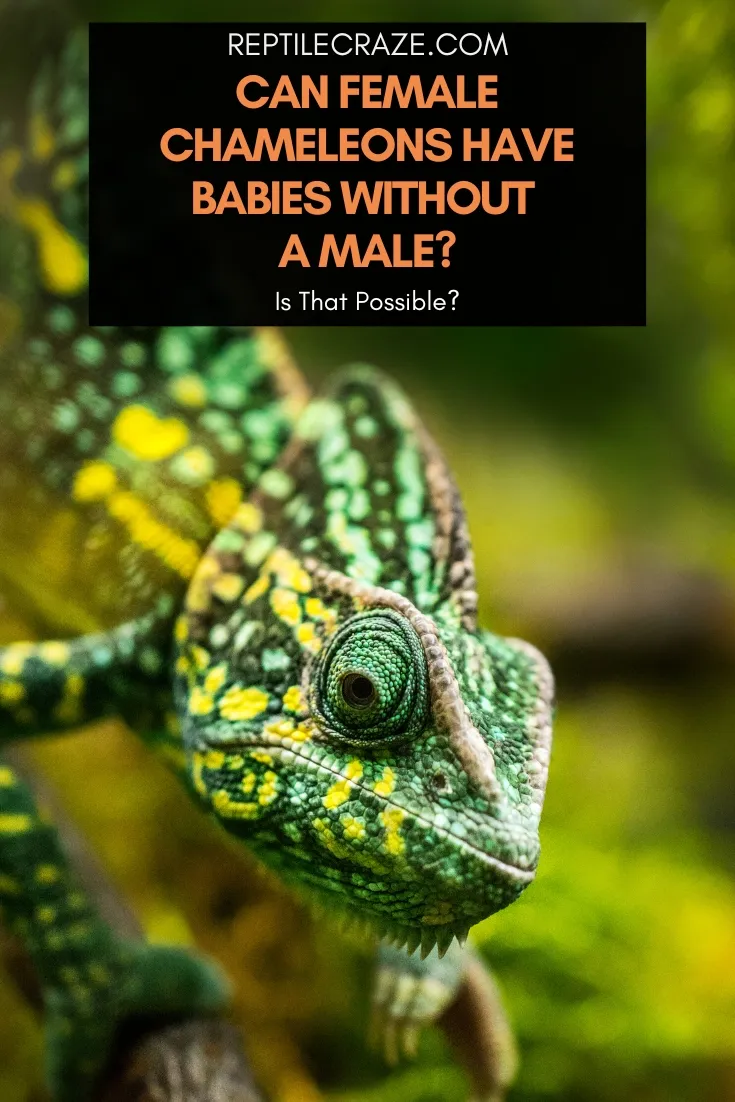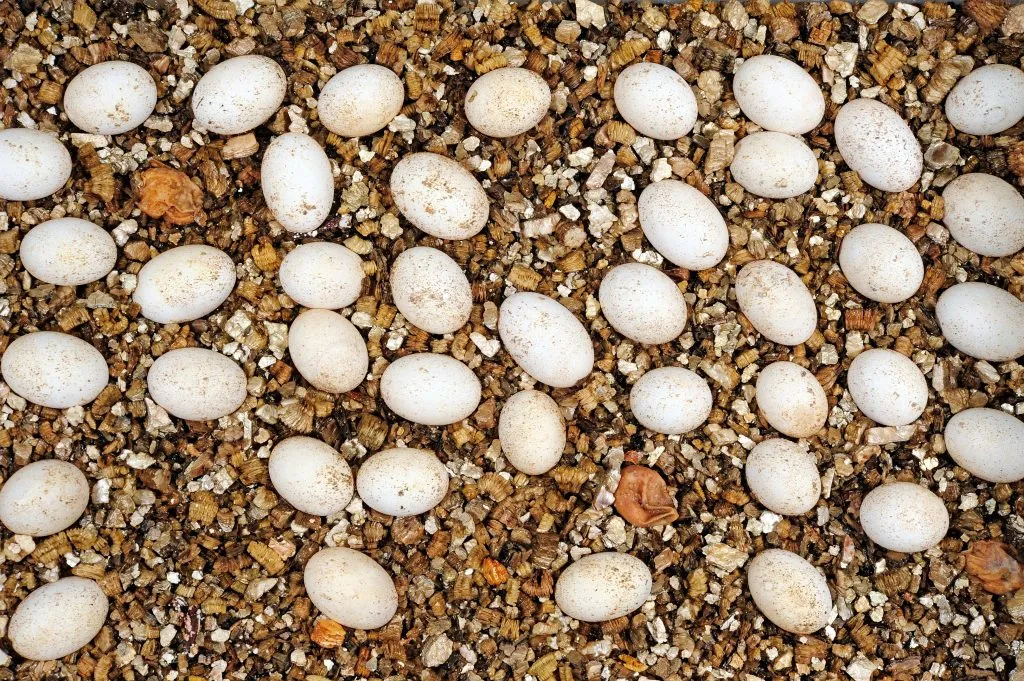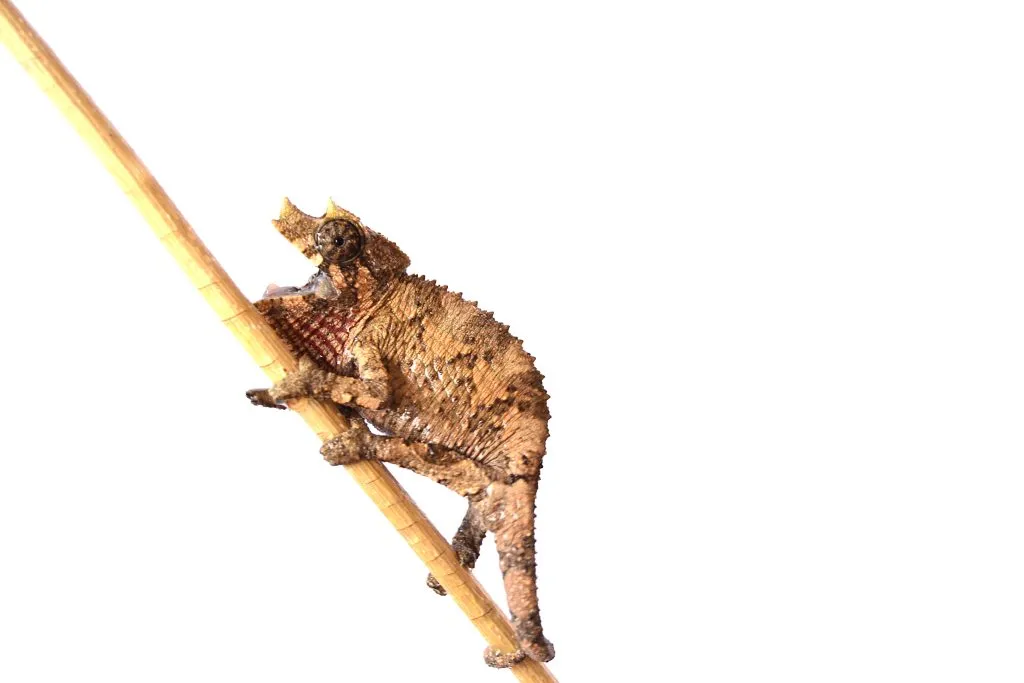
Chameleons are undoubtedly interesting creatures. One common question among chameleon enthusiasts is whether female chameleons can reproduce without the presence of a male, like some reptile species.
While female chameleons can lay eggs without a male, they cannot reproduce without a male. They follow sexual reproduction, which involves both a male and a female. The male fertilizes the female’s eggs during mating.
Interested in learning more? In this blog post, we’ll discuss certain chameleons that might be able to produce babies without a male and how chameleons produce their babies.
Table of Contents
Can Female Chameleons Have Babies Without Males?
It’s no secret that some reptiles are known to be able to produce offspring without a male. This process is called parthenogenesis, which comes from the Greek words “parthenos,” meaning virgin and “genesis,” meaning birth.
This type of asexual reproduction occurs in a few species of reptiles, including snakes and lizards. In this process, eggs can develop into an embryo without being fertilized by sperm. Since there’s no male gamete, the resulting offspring will be clones of the mother, and they will all be female.
However, chameleons are not one of these animals. Without a male around, live-bearing chameleons won’t give birth.
Meanwhile, although female egg-laying chameleons will still lay eggs without a male, these eggs won’t have embryos inside. They will never hatch, and no baby chameleons will ever come out of them. You can do whatever you want with infertile eggs, as they won’t develop anyway.
In other words, chameleons need to mate with a male in order to produce viable offspring, called a hatchling.

Is Parthogenesis Possible in Chameleons?
Although chameleons are known to need both sexes to reproduce, scientists aren’t ruling out the possibility that there may be parthenogenetic species out there that still haven’t been discovered.
In fact, some known species of chameleons are already suspected to be parthenogenic, but further research is still needed.
For instance, one newly-discovered species, the Calumma juliae, doesn’t seem to have males, which could suggest parthenogenesis. However, scientists concede that it’s also possible that males are simply better at hiding high up in the trees.
Another species, the Rhampholeon boulengeri, barely have any males in their species. This could mean that females are capable of reproducing without a male, but again, there’s no solid evidence that can back this up as of this writing.
How Do Female Chameleons Produce Offspring?
Chameleons can mate when they reach sexual maturity at around six months of age. After mating, there are two main ways that the female chameleon will produce offspring: through livebearing and through egg-laying.
Livebearing Chameleons

Livebearing chameleons, also known as ovoviviparous species, are the ones that give birth to live young. This is quite rare, with only a handful of species engaging in livebearing. This includes species in the Trioceros and the Bradypodion genera.
The most well-known ovoviviparous chameleon is the Jackson’s chameleon, a popular pet species.
After a male and a female Jackson’s chameleon mate, the female will begin developing eggs inside her body. The eggs will take around 4-6 months to develop, and then she will give birth to completely formed hatchlings.
Jackson’s chameleon hatchlings are born brown-colored and covered in a sticky membrane made of their mother’s yolk sac. There could be up to 30 offspring during a single pregnancy. These hatchlings are typically independent right away, able to hunt and feed without help from their parents.
Egg-Laying Chameleons
The other type of chameleon is the egg-laying species, also called oviparous. Most chameleons, including pet species like veiled chameleons and panther chameleons, give birth this way.
In this type of reproduction, the female will lay eggs a few weeks after mating, which she will bury in the soil. Sometimes she may also hide them in pots. The eggs are usually laid in clutches of 6-20 at a time.
Depending on the species, the eggs can take anywhere from 6-24 months before they hatch. One expensive species, the Parson’s chameleon, is notorious for their long incubation period.
The female chameleon won’t stick around to take care of her babies when they do hatch, however; she will go on her own way, leaving the hatchlings to fend for themselves.
That said, as mentioned above, even if there’s no male around, or even if no mating occurs, female chameleons will still lay eggs every 6-8 months. These eggs will, of course, be infertile, so they won’t contain any offspring.
Conclusion
To summarize, female chameleons need to mate with a male in order to have offspring. Without a male, any eggs produced will be infertile, which means they won’t contain embryos and won’t develop into baby chameleons.
- Eastern Rat Snake: Nature’s Pest Control and Fascinating Reptile - September 20, 2024
- Eastern Racer: The Fast and Agile Snake - September 19, 2024
- The Eastern Indigo Snake: The Majestic, Non-Venomous Hunter of the Southeast - September 18, 2024
